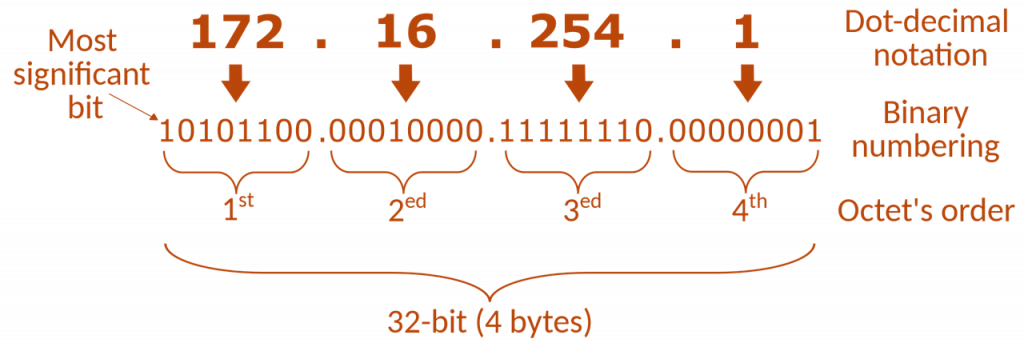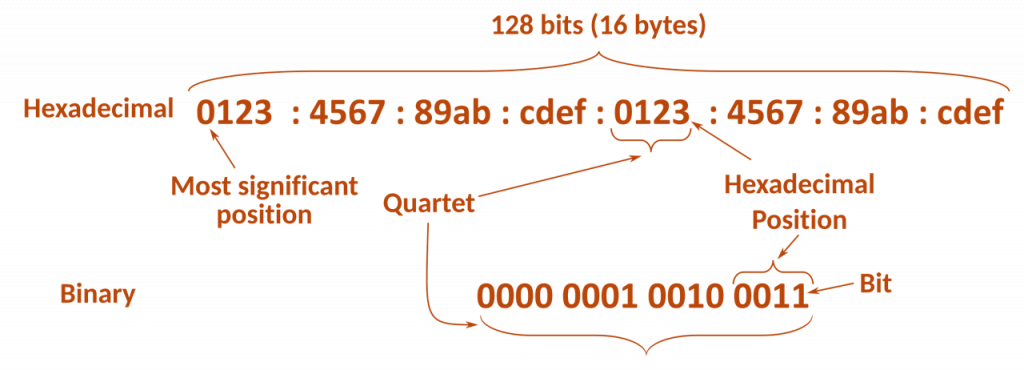IPv4 vs IPv6 Proxies: What’s the Real Difference?
Whether you’re navigating anti-bot systems, geo-restricted content, or want a reliable proxy solution for your business, choosing the right type of proxy is foundational. When it comes to IPv4 vs IPv6 proxy options, most users aren’t sure what separates the two or if it even matters.
This guide breaks down exactly how IPv4 vs IPv6 proxy servers compare in terms of technology, compatibility, suitability for different use-cases, and long-term adoption. Whether you’re running scraping campaigns or need to evaluate proxy infrastructure at scale, knowing the difference could significantly affect results.
Understanding IPv4 and IPv6 Address Protocols
Before diving into proxies, let’s take a quick look at the base IP protocols that power them.
What is IPv4?
IPv4 (Internet Protocol version 4) is the most widely used version of IP. It uses a 32-bit address scheme, meaning there are about 4.3 billion unique IP addresses available. That might sound like a lot, but with internet-enabled devices now ingrained in everyday life, IPv4 is officially strained.
IPv4 addresses are typically written in dot-decimal notation, where each section represents 8 bits that together form the 32-bit scheme. By 2015, the US officially announced that it had exhausted its pool of available IPv4 addresses.
Despite this, IPv4 still carries the majority of internet traffic today. The protocol continues to function thanks to techniques that extend its lifespan, such as:
Network Address Translation (NAT): allowing multiple devices to share a single public IP.
Reusing IPs: recycling addresses across different networks to maximize availability.
IPv4 format example: 172.16.254.1

What is IPv6?
IPv6 (Internet Protocol version 6) was introduced as a solution to the IPv4 address exhaustion problem. It uses 128-bit addressing, allowing for roughly 340 undecillion IP addresses (that’s 340 followed by 36 zeros!).
That may sound like an endless supply, but technically, it’s possible that one day even this won’t be enough. For now though, IPv6 provides more than enough addresses to support global connectivity far into the future.
IPv6 format example: 0123:4567:89ab:cdef:0123:4567:89ab:cdef
IPv6 format example. Source: https://en.wikipedia.org/wiki/IPv6
IPv4 vs IPv6: Key Functional Differences
- Address Length: IPv4 – 32-bit; IPv6 – 128-bit
- Header Complexity: IPv6 has a simplified and more efficient header
- Built-in Security: IPv6 natively supports IPsec for encryption & authentication
- NAT Dependency: IPv4 often uses Network Address Translation; IPv6 doesn’t need to
- Here’s a clear breakdown of the main differences between IPv4 vs IPv6 Proxies:
Feature IPv4 IPv6 Types of Addresses Unicast, Broadcast, Multicast Unicast, Anycast, Multicast Packet Size (minimum) 576 bytes 1208 bytes Header Fields 12 fields 8 fields Optional Fields Yes No (uses Extension Header instead) Configuration Manual setup required Optional (supports auto-configuration) Security Relies on apps/websites; not built-in IPSec is integrated and mandatory Mobile Compatibility Less suitable due to dot-decimal notation Better suited, uses colon-separated format Main Feature Already widely supported and easier to use Enables direct addressing thanks to vast address pool - In short, IPv6 was designed to modernize digital communication, but implementing it at scale hasn’t been as straightforward as it sounds which brings us to proxies.
IPv4 vs IPv6: Which Proxy Type Should You Choose?
Having widespread device and network support makes C-grade IP addresses more impactful than an A+ technology that sits dormant. Now that we understand the technical differences, it’s time to answer what really matters which type of proxy should YOU use?
Compatibility and Accessibility
IPv4 is the undisputed champ when it comes to real-world compatibility. The vast majority of devices, websites, networks, and legacy software still rely heavily on IPv4.
- IPv4 Proxies: Universally accepted on virtually every website or web app
- IPv6 Proxies: Still hit-or-miss with certain platforms and mobile providers
Performance Benchmark Side-by-Side
While IPv6 is technically created for faster, more direct communication due to the absence of address carving and NAT, the benefits won’t be clear unless the connected server, host, and endpoint all speak IPv6 fluently.
- Latency: Near equal under ideal scenario, but IPv4 has more tested nail-clear routing in practice
- Throughput: IPv6 starts to edge out only in systems running pure IPv6 stack end-to-end (rare for most users)
IPv4 vs IPv6 : Best Proxy Use-Cases For Each Protocol
IPv4:
- Web scraping
- Accessing restricted networks
- Testing setups that require legacy device protocols
- Streaming, gaming, site parsing
IPv6:
- SEO monitoring on support-compliant blogs and modern APIs
- Email verification campaigns (faster throttling recovery)
- IoT platform integrations or mobile testbeds with IPv6 carrier support
- Lower-cost sampling pools
So, if compatibility and maximum reach are your game, you’re not replacing IPv4 just yet. But, if you’re cost-sensitive, or operating in environments that natively speak IPv6, the savings and raw volume shouldn’t be ignored either.
The Myth of Virgin Proxies Debunked
We hear this phrase all the time: “I only want virgin IPs.” It has a nice ring to it if you’re running campaigns that benefit from fresh identifiers but here’s why framing every unused IP block as “better” just doesn’t track.
Here’s the truth:
- Virgin ≠ safe. Many “fresh” IPs can trigger auto-suspicion from providers simply because they’re not actively used versus aged/low-noise IPs.
- Recycled proxies can outperform new pools if they maintain a strong reputation and rotate strategically.
Want resilient IP rotation that preserves overall stealth? Consider premium residential proxies with built-in distribution reputations over so-called ‘virgin’ sourcing.
Can IPv6 Replace IPv4 Yet? Barriers to Adoption
Let’s address the elephant in the server rack, IPv6 adoption is slow⎯painfully slow at that. And while tech-forward teams celebrate IPv6’s theoretically unlimited scalability, here’s why real-world rollout has dragged.
Provider-Side Barriers
- Datacenter resistance: Still heavily racked for IPv4, and cost implications delay upgrades
- Residential stakes: OEM routers, IoT chipset vendors, and customer service api integration frequently favor ‘low issue’ stacks (yup, still native IPv4)
Market Trends You Should Know
Do large-scale proxies use IPv6?
Increasingly, yes, particularly in regions with better network maturity (think German, Chinese, South Korean BGP providers). But for US-based campaigns?Many high-engagement apps don’t communicate well through IPv6 fully. So while proxy providers, ISPs, residential partners, and mobile vendors are enabling access, strategic deployment still leans 70:30 toward IPv4.
List of Major Sites Incompatible with IPv6
Some major platforms continue to prefer or exclusively serve IPv4:
- Twitter (rate limits vary; steward sensors more strict on IPv6)
- Nike (some flows token-throw errors over IPv6 networks)
- Slack mobile webs
- Steam (several CDN endpoints)
These limitations are serious, do a protocol test BEFORE bulk running forms or engagements via IPv6 to avoid silent fails.
Common Misconceptions About Proxy Protocols
Let’s clear up some long-standing proxies myths. Chances are, you’ve believed one or more:
- Myth: IPv6 is more secure by default
Truth: It features IPsec but that doesn’t inherently secure networks unless configure
- Myth: IPv6 is more secure by default
- Myth: All major sites now fully support IPv6
Truth: Many do, but function subtly breaks under specific ports, apps and redirects.
- Myth: All major sites now fully support IPv6
- Myth: IPv6 proxies are always cheaper
Truth: Pricing fluctuates based on reputation sources and delivery structure premium IPv6 may cost more to maintain compliance-grade quality.
- Myth: IPv6 proxies are always cheaper
Final Thoughts: Which Proxy Meets Your Needs?
In the end, both IPv4 and IPv6 proxies have a critical place. For foolproof routes through ad networks, e-commerce blockers, or social graph fences IPv4 still outpaces it in consistency.
However, if launch velocity or mass-thread resourcefulness matters, close your eyes and pick IPv6 where it makes sense. And reach sentimentally fresh, less-overutilized spaces.
Ultimately, the choice between IPv4 vs IPv6 Proxies depends on your goals reach, compatibility, or scalability.
FAQs
Q: Which proxy is better, IPv4 vs IPv6?
A: IPv6 proxies are generally faster, cheaper, and more secure than IPv4. Since IPv6 has almost unlimited addresses, it’s the future of the internet and more websites are starting to support it.
Q: What are the three main differences between IPv4 and IPv6?
A:Address size: IPv4 uses 32-bit addresses, while IPv6 uses much longer 128-bit addresses. Address space: IPv6 can support far more unique devices online because of its huge pool of addresses. Header design: IPv6 has a simpler, more efficient header compared to IPv4, which makes data transfer smoother.
Q: What is the 3-1-4 rule in IPv6?
A: The 3-1-4 rule in IPv6 means that the first three groups of numbers (hextets) are assigned to your organization by an ISP or Internet registry. The fourth group is used for subnetting, and the last four groups are used to identify individual devices on your network.
Q: Should I use IPv6 instead of IPv4?
A: Yes, if your setup supports it. IPv6 usually gives you a better connection because it has more addresses, handles data more efficiently, and comes with built-in security features.

